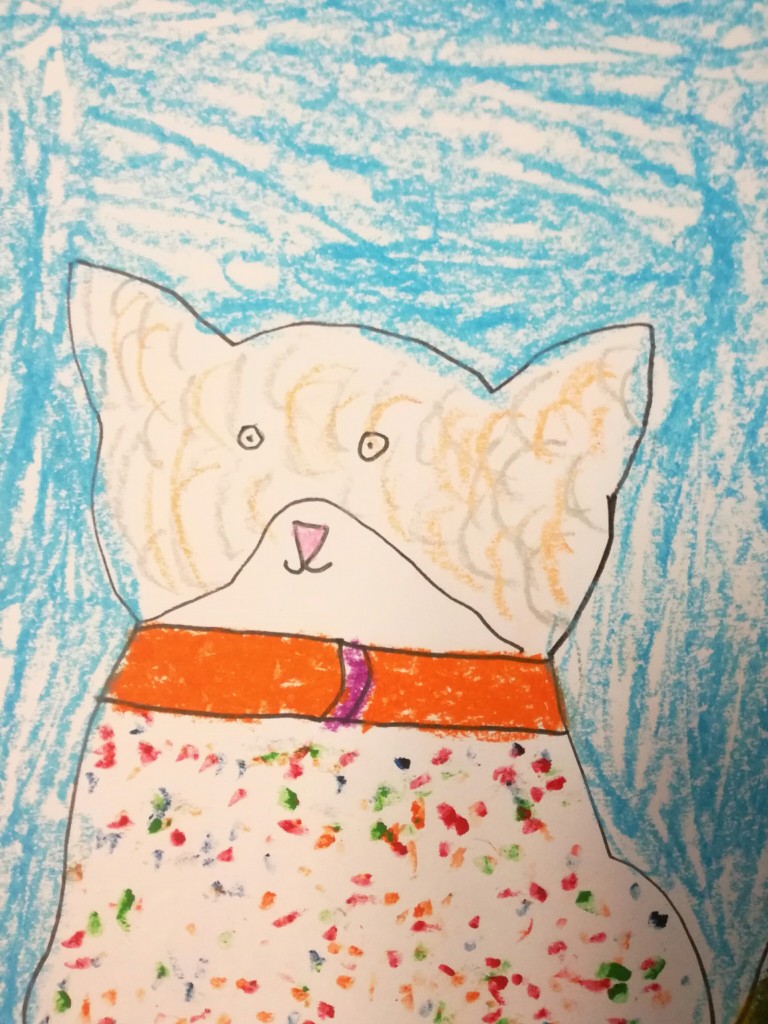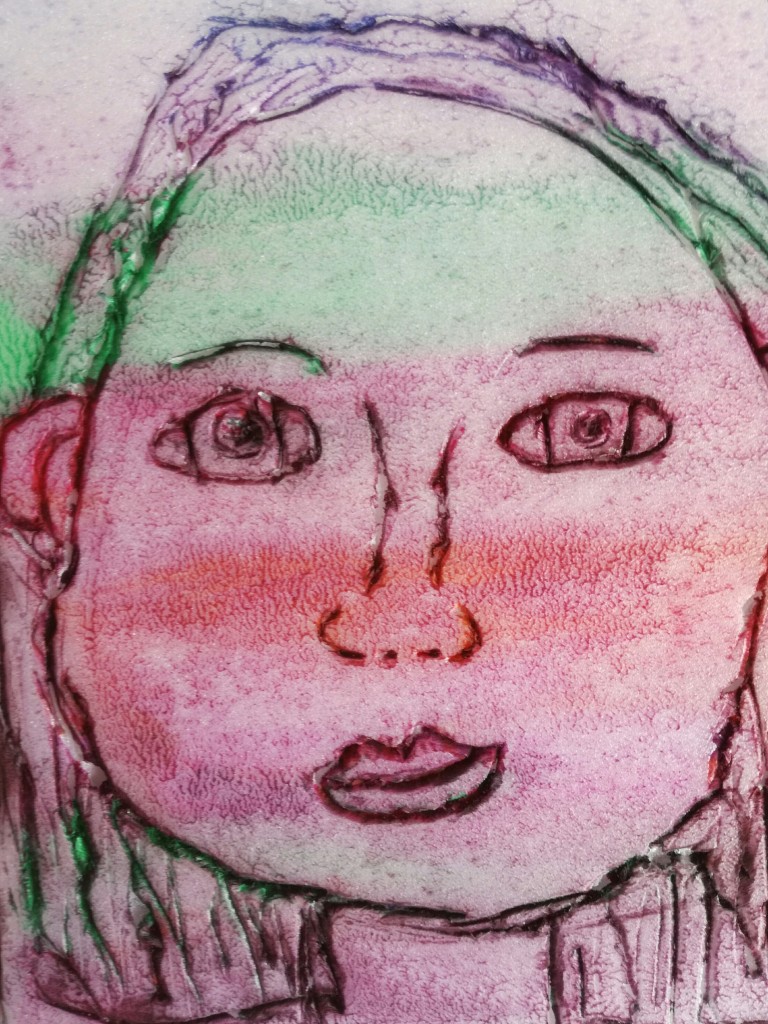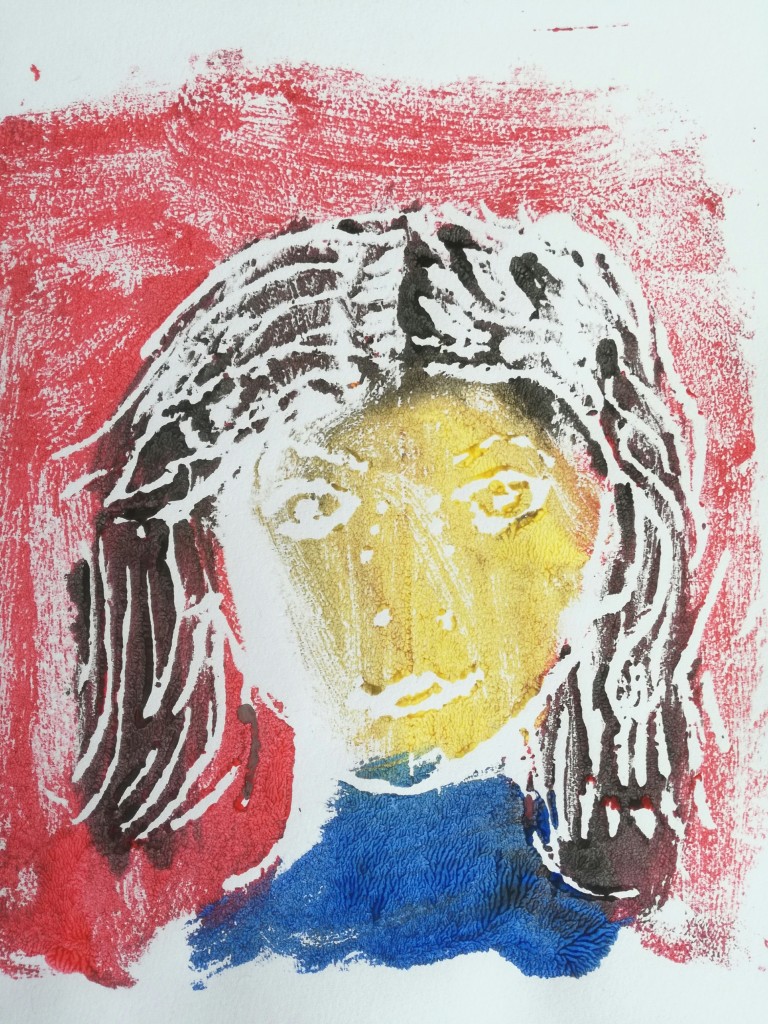What is a portrait? Working with portraits at the Victoria Art Gallery by Liz Benington
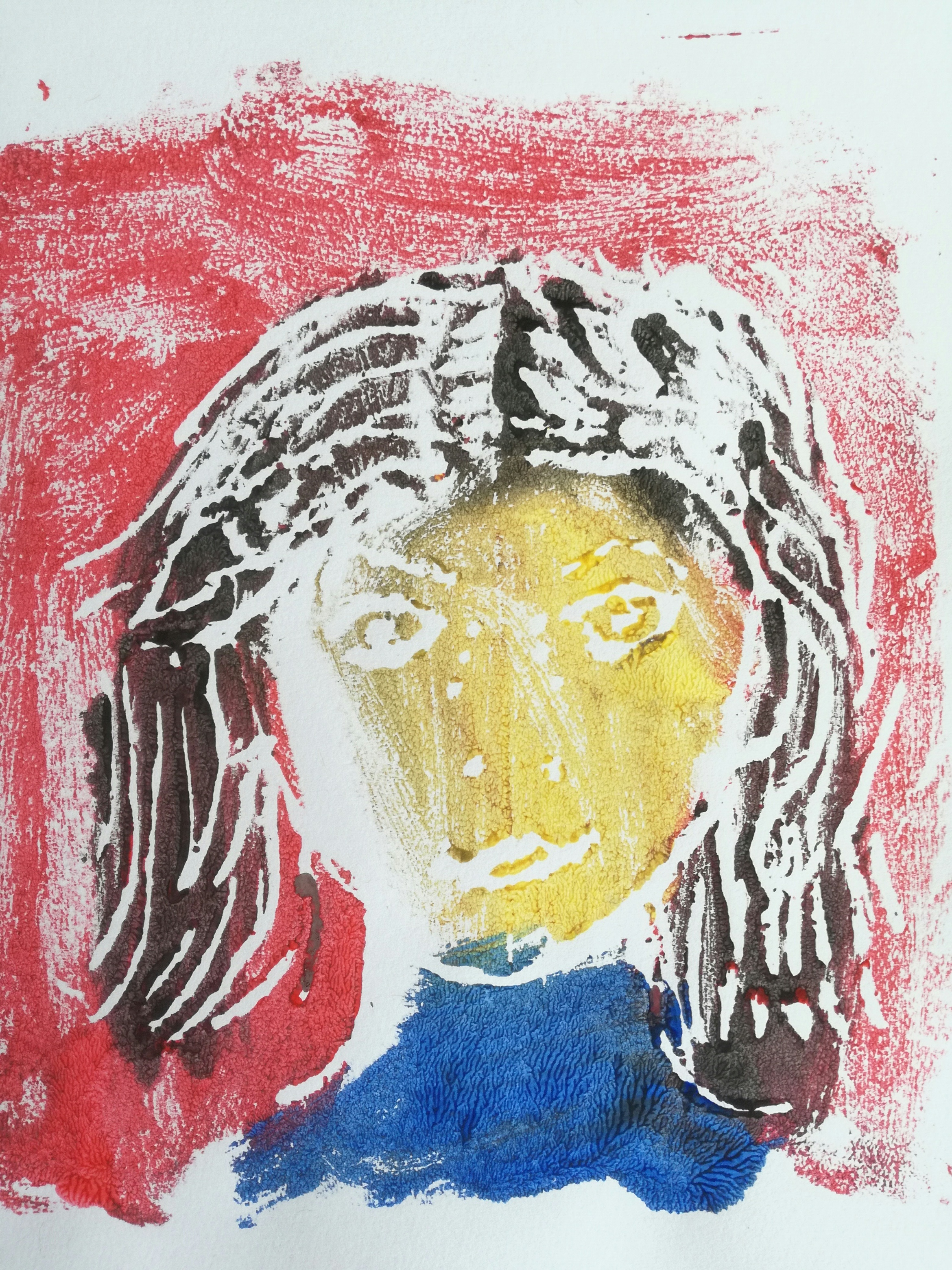
Portrait print © Bath & North East Somerset Council 2017
I attended this seminar at the National Portrait Gallery, keen to develop our work with portraits at the Victoria Art Gallery in Bath. Portraits are one of our most popular subjects with schools and nurseries. I was also looking forward to seeing more of the work of Howard Hodgkin the National Portrait Gallery exhibition: Howard Hodgkin: Absent Friends.
An early point in the seminar was that portraits are not always of people. One of the most popular portraits in the Victoria art gallery is of a small dog called Pilu, who was famous answering maths questions with his paw. I very recently asked children to create a portrait of a dog, which could be Pilu, or their own dog, or an imaginary pet. Every child named their dog and wrote a label for their picture. It was a fun event to introduce families and young children to portraits at the art gallery. One child wrote that her favourite part of the morning was ‘gazing at Pilu’.
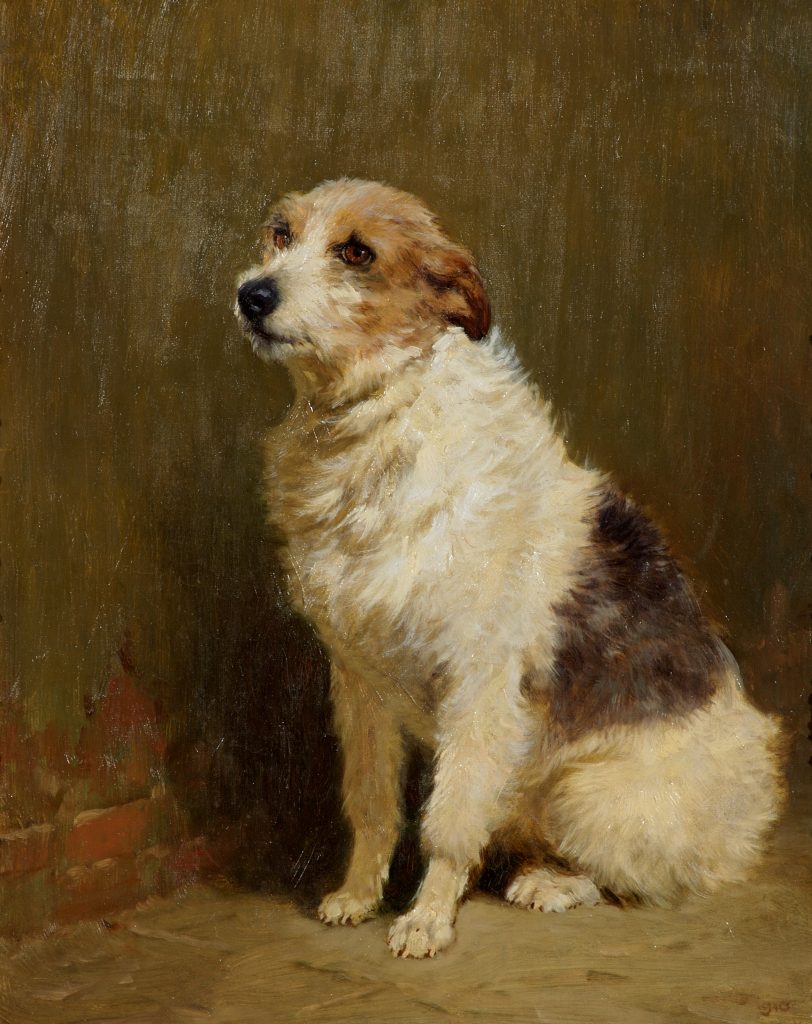
Portrait of ‘Pilu’, a Performing Dog, by John Charlton (1849–1917), oil on canvas, 1910, Victoria Art Gallery, Bath © Bath & North East Somerset Council 2017
Joanna Woodall gave us some definitions of portraits which ring true for many pictures in the collection, from the sixteenth century to the present day: portraiture is an art form which ‘makes absent men present’. It is an ‘evocation of a person’. The fascination of portraits, which I see in my work with children, is the act of coming face to face with someone from the past. The portraits in the gallery are mainly representational: children can see the hair style and eye colour of young Sophia Dumergue, for example, but they can also find out the colour of her best dress and the style of her elaborate hat and think about what those objects are telling us. There is more to the ‘evocation of a person’ than the representation of a face, for example a person is part of a set of relationships with other people and animals, a life story, a place in time. There are dimensions to portraiture which children explore through objects and role play and also areas which I hope to investigate further in the future.
For older children the question of propaganda in portraiture is often explored at the gallery. We see the wealthy sitter as he or she wanted to be seen, so King Henry VIII, is portrayed as the epitome of wealth, fashion and power, in a frame topped off with a gold crown for good measure. Children today are more familiar than ever before with using a phone/camera to make portraits and especially self-portraits. It would be interesting to explore the subject of the selfie with children, alongside the self-portraits and portraits in the art gallery. They could create their own photographic portrait at school, to display alongside the paintings. Photography is becoming a much bigger part of the gallery experience. For example; teachers use it to record the children’s imaginative play with costume and props related to the paintings and some of these photographs or films are sent, almost ‘live’, to parents.
As a result of the study day, I have been working on a session to enable children to move away from close representational portraiture. Drawing a realistic self-portrait or portrait is a common task in schools, but a challenging one. I have seen children become dispirited with their drawing skills or lost in the subtle use of colour. I asked children to draw a very simple self-portrait, not aiming for detail. The children then etched their drawing into a foam block, simplifying it again in the process and made a series of prints. The result has been some bold drawing and a riot of colour.
I am planning to use this printmaking technique in the future to enable children to use colour expressively during the Victoria Art Gallery’s autumn 2017 exhibition Howard Hodgkin: India on Paper.


